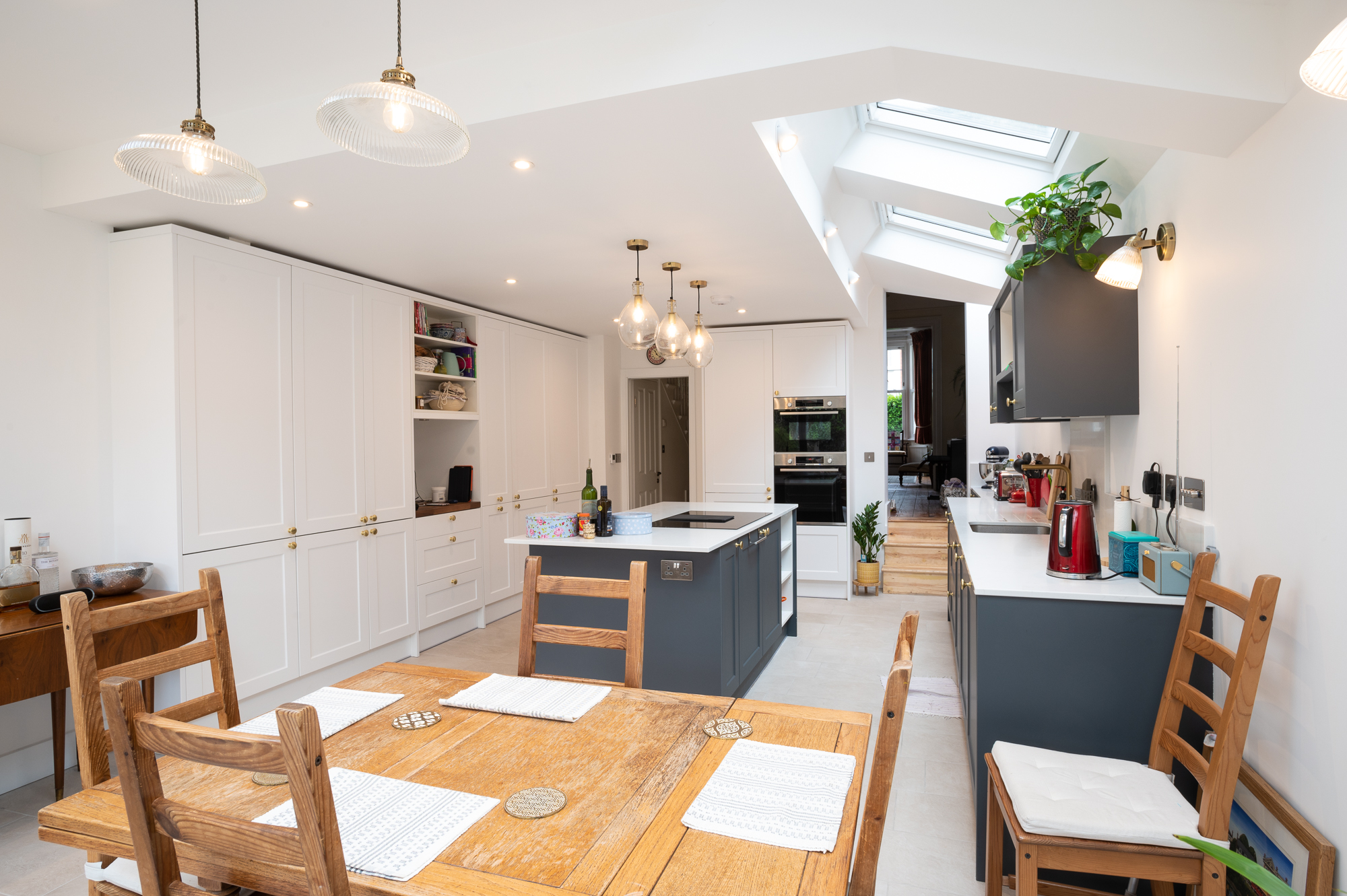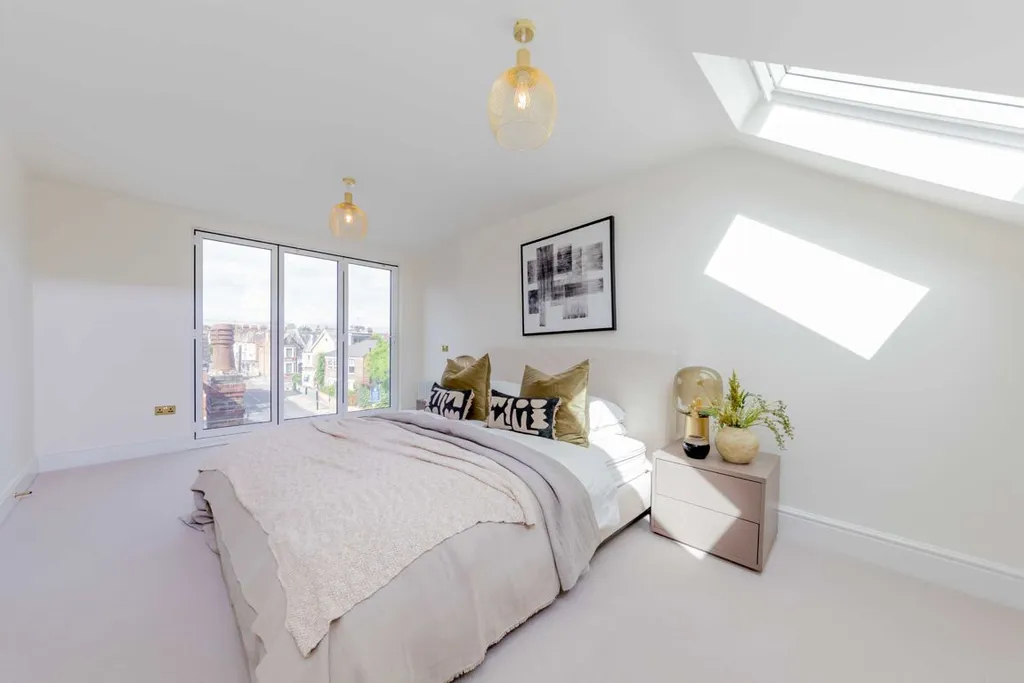If you are planning an extension, it is important to finalise the tiles that suit your home. The types of tile extensions you want for your home don’t only depend on your choice, but also the area where the tiles will be placed and the exact footfall as some tiles are hard-wearing and resistant to cracking compared to others.
Whether you’re looking for outdoor tiling options that can stand humidity or for indoor floors which are suited for children, there are many popular types of tiles available to choose from. Man-made tile like ceramic or porcelain are great as they complement all styles and budgets. You can also choose from natural stone tiles like travertine, granite, and slate, especially if you have a historical or period style home.
Man Made floor tiles:
Man-made tiles are well known as an affordable and easy tile option, as once fitted they do not need retouching. Natural stone tiles have stunning unique texture and tone, but along with being heavy on your wallet, these tiles are also likely to scratch and crack and will mostly need sealing while fitting them and once after. Man-made tiles do not have the stone like character, but they are a great option if you are on a strict budget.
1. Ceramic tiles

Ceramic tiles are your blank canvas. They come in several designs, can be customised to your liking and are one of the most affordable tiling options.
Although, they need more maintenance compared to porcelain tiles as they can easily be chipped and are subject to usual wear and tear. With the wide variety of designs available in the market, ceramic tile can suit any room beautifully. However, they are best suited for indoor areas due to their softer architecture. Hence, they work best in low traffic areas like bathrooms and kitchens.
Most simple design ceramic tiles cost between £30- £80 per square metre and some particularly decorative tiles can reach up to £100 per square metre, depending on the design.
Ceramic tiles are usually cheaper than any other option like porcelain, hardwood floor or even natural stone, due to how delicate they can be. So, you can find something that will fit in your budget.
Even though moulded with soft material, ceramic tiles can be extremely hard hence anything that falls on the floor will be broken, and the tile will probably crack. Also consider that these tiles will feel colder under your feet compared to other flooring options.
2. Porcelain tiles

Porcelain tiles are extremely versatile and are suitable for any room. They are the chameleon of the tiles as they can be made to look like solid wood, natural stone or even concrete. They are dense, smooth and impermeable, making them a great option for indoor or outdoor tiles.
Many people confuse porcelain tile with ceramic tiles as they look almost identical. Even though they both are made with natural clay, the major difference is in their manufacturing process. Finely ground sand is used to make porcelain tiles making them a much more durable option. Unlike ceramic tiles, porcelain tile and be fitted in heavy traffic are like the kitchen floor or even the living. These tiles also work beautifully in the garden.
Porcelain tiles cost around £60 per square metre and above. They can also be budget friendly, as some of the basic options will cost below £60.
Porcelain tiles are suitable for installing underfloor heating and most times UFH becomes a necessity as these tiles can get very cold to walk on. UFH will make a huge difference especially in the colder months.
3. Quarry tiles

Quarry tiles are made of a combination of clays. They are complex and firmer than ceramic or porcelain tiles and hence more hard-wearing. During the glazing process, quarry tiles are fired at a very high temperatures, making them extremely durable. They are an amazing option for any place in your home, regardless of heavy traffic areas like living room, kitchen, hallway, dining room, garden or anywhere outdoors.
We call quarry tiles the captain of tiles, surviving any and every possible condition thrown at them!
Basic options will be available around £20 per square metre. However, decorative options can cost more around £40 and above.
Quarry tiles are one of the budget friendly and fuss free tiles. There is no reason for why you can’t install quarry tile in any and every room in your home. They are adaptable for any aesthetic; they work best with underfloor heating and the retain heat avoiding the floor to get colder in winter months. They are extremely robust, easy to clean and less prone to frost compared to terracotta tiles due to their porous nature, making them a best fit as outdoor tile.
4. Terracotta tiles

Terracotta and Quarry tiles are almost identical. Both tiles are made with a mixture of clays. However, terracotta tiles are fired at a much lower temperature than quarry tiles which give them a much more rustic and rawer look.
Terracotta and quarry tiles are both available in several colours like black, brown, or grey and different shapes like brick form, hexagonal and the most common square shape. They both can be used as floor tiles. However, terracotta tiles are not always recommended for outdoor areas.
Terracotta tiles need sealing. Once they are sealed, they can be treated with wax or sheen products to achieve a shiny finish instead of their true rustic character.
These tiles need to be cleaned with specific cleaners. Ask the supplier for cleaner recommendations as anything that is not recommended might leave behind a film which can attract dirt and age the tiles significantly.
5. Cement tiles

Cement tiles have gained huge popularity in recent times. They are becoming the first choice of most homeowners due to the variety of designs, patterns and colours they are available in. They are not just aesthetically pleasing but are one of the most practical tiling options.
Cement tiles are tricky to install and hence can be slightly heavy on the wallet. However, once they are sealed correctly, they are the most durable and hard-wearing option. They are suitable for a contemporary style home. They look fantastic in any space. Although they are recommended for low traffic areas, not because they are less durable but just to protect their beauty.
6. Glass tiles

Glass tiles are often used in the bathrooms. They are classy, durable, tough and easy to clean. They are not suited for heavy traffic areas as they will break with any contact with a falling object. Glass tiles are widely used on bathroom walls instead of the floor.
Something to think about: they are prone to scratches, breakage and require care.
7. Mosaic tiles

Nothing compares to the beauty of a mosaic tile. There are variety of style available in the market for mosaic tiles and they complement any area of the space. They are typically used as wall tiles, often when tiling backsplash. However, they would look equally stunning if used as kitchen, hallway or living room floor tile.
Natural stone tiles
Natural stone tiles typically come in natural, honed and polished finishes. Natural tiles are often rustic, asymmetrical, and uneven in appearance and texture, whereas honed tiles are smooth but with a matt finish and polished tiles have a smooth sheen. Polishing achieves a more water-resistant tile. Although, it is important to keep in mind that the smoother a tile is, the more slippery it becomes. If you are looking for a slip resistant tile option for the bathroom, natural textured tiles are the best choice.
Natural tiles look and feel extremely luxurious compared man-made tiles. It’s worth keeping in mind that they are heavier on the pocket, require more maintenance and need sealing to make sure they stand the test of time. Natural tiles are extremely versatile and compliment almost all styles for home. If you have a modern aesthetic, granite or travertine will be the best options for you.
8. Granite

Granite tiles are the most durable. It’s sturdy, comes in a variety of colours, and resists scratches when sealed and polished. It can, however, crack. Perfect for kitchens, living rooms, and hallways.
9. Marble

Marble is permeable. Hence, it is practical to choose honed, and polished finishes especially in the kitchen. Marble tiles will look stunning in bathrooms, and it comes in variety of colours, styles and patterns and will work equally well in dining rooms, living rooms and even hallways.
10. Limestone

Limestone has both rough and polished surfaces and earthy hues. Avoid installing it in places with high activity, such as kitchens, as it may discolour and scratch easily.
11. Slate

Slate is extremely durable and is available in a variety of ominous, earthy tones. Although typically slate has a naturally textured surface, honed, polished finishes are also a great option. Slate is an excellent choice for bathrooms, living rooms, and kitchens.
12. Travertine

Travertine tiles are typically soft and permeable with a naturally pitted surface. Although, there are many honed and polished options available in the market. It is important to keep in mind that travertine can scratch, and stain and regular resealing is needed. Therefore, these tiles are not suited for high traffic areas especially kitchen. They will look fantastic in bathrooms.
If you are planning on remodelling your home or just want to change the tiles, ask yourself these questions before making any decision
- Where the tiles will be placed? whether it is a high traffic or low traffic area.
- Are the tiles suitable for the chosen space?
- What is the budget?
If you want to get a free quote, get in touch with us today and book a free initial consultation and we can help you turn your space into a beautiful home you can enjoy with your family.




